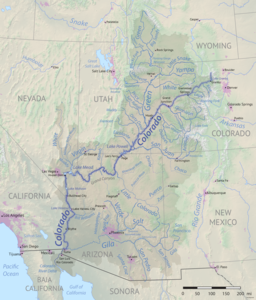A book review: A Great Aridness

The central theme of denial runs throughout this work. People don’t want to know the details of how they receive water, or how vulnerable Lake Meade may be. Real estate developers in particular do not want an informed community discussion of this topic. Meanwhile, pragmatic water managers are working to build a water intake drain at the very bottom of Lake Meade. While the book focuses on the American southwest, its central issue is that of climate change, which is why I am reviewing it in a course on global studies. The American southwest is a case study for the future, with applicability from Portugal to Iraq.
The U.S. southwest faces sustained warming and drying, even as more people move into the sunbelt in coming decades. The environment that these people enter will change drastically within their lifetimes. In Chapter 2 “Oracle: Global Change Type Drought,” deBuys examines the impact that climate change will have upon entire ecosystems. On page 46, deBuys has a map of Western forests that are being decimated by the spruce beetle, the mountain pine beetle, and the Piñon Ips beetle. The damage extends as far north as the Yukon. My own family lives in British Columbia, where entire swathes of the north have turned red with the needles of dying trees. De Buys describes what may lay in store for the north: …


